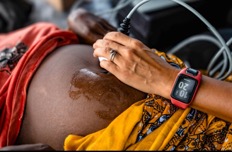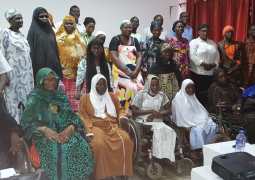
A study conducted by Medical Research Council Unit The Gambia at the London School of Hygiene & Tropical Medicine (MRCG at LSHTM), funded by the Wellcome Trust revealed that heat exposure must be considered in public health interventions to reduce the impact of climate change on pregnant women and their children. The findings published in The Lancet Planetary Health, suggest that heat stress may impact the growth of babies after they are born, adding to previous research by the team showing the impact of heat stress on foetal development.
Being the first of its kind, the study showed that infants up to the age of two exposed to high heat in their environment may have lower weights for their age. The largest decreases were seen in infants between 6-18 months of age who had experienced higher average daily levels of heat stress in the previous three-month period.
At 12 months old, infants exposed to an average heat stress value equivalent to 30°C were more likely to have a reduced weight for their height and age, compared to those who experienced heat stress equivalent to 25°C.The results were consistent in both male and female infants.
The data was originally collected through the Early Nutrition and Immunity Development (ENID) randomised controlled trial conducted in West Kiang in The Gambia, between January 2010 and February 2015. A total of 668 infants were followed across their first 1000 days of life. 329 (49%) of the infants were female, while 339 (51%) were male.
The trial analysed the relationship between heat stress and foetal growth based on clinically-recognised scores for weight, length and head circumference for gestational age. It also evaluated the effect of heat stress on infant growth based on weight and height scores from 0-2 years of age. At birth, 66 (10%) infants weighed less than 2.5kg, described as a low birthweight, 218 (33%) were small for gestational age and nine (1%) were born prematurely.
Heat strain occurs when our body's way of controlling its internal temperature is compromised by external factors such as weather or physical activity. In the study, heat stress was defined using the Universal Thermal Climate Index, which considers factors including heat, humidity, wind speed, and solar radiation, and assigns an equivalent temperature (°C) with an associated risk of developing heat strain. Over the course of the study, the average heat stress exposure level was 29.6°C. The highest daily maximum was 45.7°C and highest daily minimum was 28.9°C.
“Our study demonstrates that the intersecting crises of climate change, food insecurity, and under nutrition are disproportionately affecting the most vulnerable, including young children. These findings build on previous evidence showing that the first trimester is a vulnerable time to heat exposure, and it is important that we now consider which factors may be contributing to the relationship” said Dr Ana Bonell, Assistant Professor at MRC Unit The Gambia at LSHTM and lead author of this study.
“We need to explore which populations are projected to experience heat stress the most and develop interventions to reduce this exposure, and enable us to develop effective public health measures. With global rates of child wasting remaining unacceptably high and ongoing planetary warming, these findings must spur action on improving child health,” she added.
The researchers indicated the need for research to assess the relationship between heat stress and health impacts in regions beyond The Gambia.





